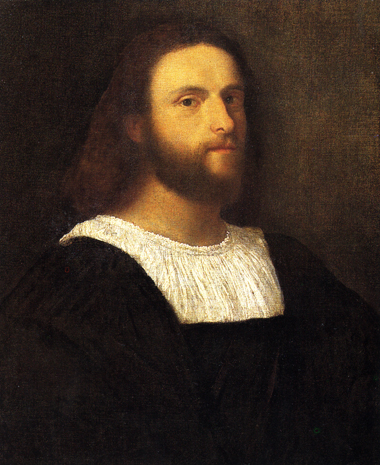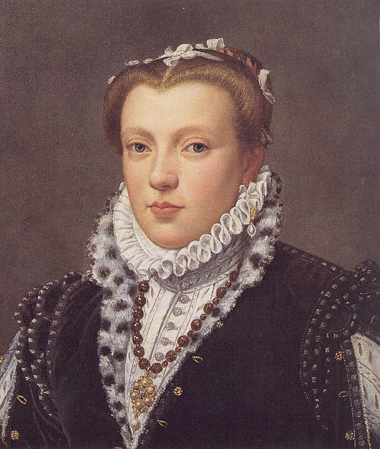|
It is well known that one of the dominant themes of the Renaissance is Man as the criterion of measurement and the centre of the whole world. It is certainly no coincidence that in this cultural climate the portrait, often a celebration of the person portrayed, emerged as an independent genre.
|
|
Tiziano
Portrait of a man
c.1510
This Portrait of a Man was painted by Titian around 1510. The painting, which shows the strong influence of Giorgione, emphasises the light on the surface of the clothes and the man's face, without in any way breaking up graphic unity. This is the technique of tonalismo, i.e. the application of successive layers of colour without any ground, a characteristic of Venetian painting between the 15th and 16th centuries.
Nothing distracts us from the subject, no superfluous detail, no architectural setting; there is only the human figure and the interplay of light and darkness.

|
|
Giovan Battista Moroni
Portrait of a woman
second half of 17th century
The Portrait of a woman is the work of Giovan Battista Moroni. The lady appears to us sumptuously decked out according to the fashion of the 1570's. Posing against the monochrome background, the woman mirrors in her fixedness the strict social structure of her city and her time, without revealing anything of herself, and entrusting any message to her external appearance.

|
|
Pontormo
Self-portrait
c.1520
This Self-portrait was painted in Florence most probably by Pontormo around 1520. On an unusual support, a terracotta tile, the painter tilts his head and paints himself just as he is, with his painting smock and hat pulled over his forehead. The eyes, accentuated with a violent chiaroscuro effect, realistically express a certain melancholy and wildness of spirit.

|
|